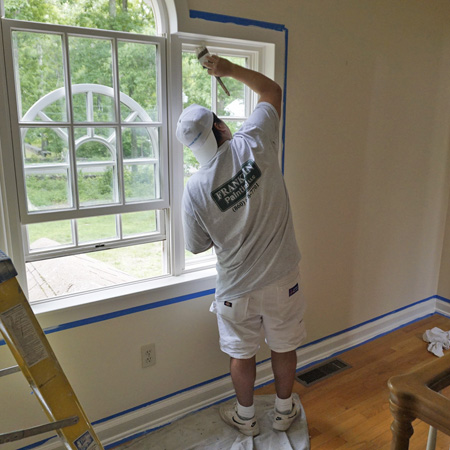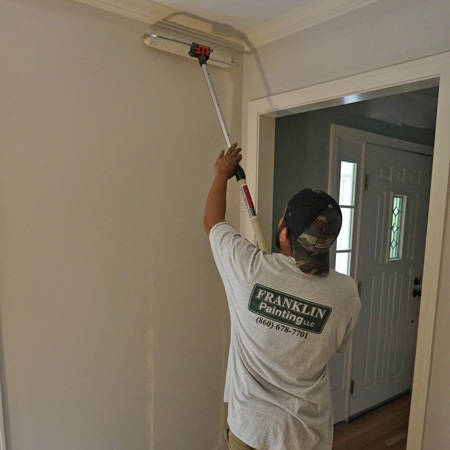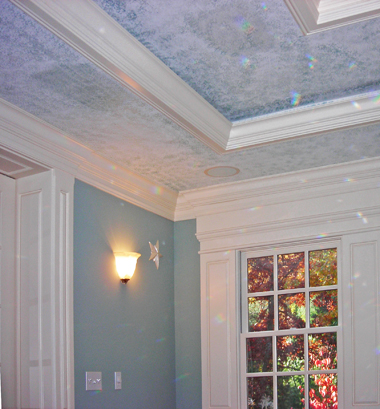
In What Order Should I Paint the Rooms in my House?
Which room should be painted first, second, third, and so on is as individual as the selection of paint colors. The following is information that could help you decide which room to paint first. Also below, you will find tips for eliminating paint fumes.
1. Kitchen. The kitchen is typically the heart of the home. It’s where everyone usually gravitates at least three times a day. During the process of painting, there are several benefits to starting off by painting the kitchen. First, you may be able to prevent food spoilage, since you are limiting the amount of disruption in the kitchen by starting there. Secondly, day-to-day life will be easier, if you can more quickly return to at least your coffee-making and meal-making routines.
2. Bathroom. Because bathrooms are smaller in size, it’s a good room for do-it-yourselfers to do second, if not first. You will quickly be rewarded with a sense of accomplishment, which can serve to encourage you as you continue to paint the interior of the remaining rooms.
3. Bedroom. It depends on your line of thought, whether painting your bedroom should be done toward the front or at the back of the interior painting project. Some people like the idea of sleeping in a room that doesn’t have the new paint smell as the other rooms are painted and temporarily take on a distinctive paint odor. If you do the bedroom first, on the other hand, you can block off fumes as the rest of the interior painting is done and enjoy the beauty of the fresh paint job.
4. Living Room. After accomplishing interior painting in smaller rooms, it’s good to tackle the living room. This is usually a large room with large furniture. Painting the living room will take longer than most other rooms. Best not to save it to the end, when you may need a better view of the light at the end of the tunnel.
5. Laundry Room. When your laundry room is painted, the paint fume smells can get in your clothing. Save the laundry room for last, to avoid having your clothes smell like paint throughout the process of interior painting.
 Tips for Eliminating Paint Fumes
Tips for Eliminating Paint Fumes
Many common household materials can help to eliminate paint fumes in your home, including the following:
- Pieces of wooden charcoal placed in containers throughout a newly painted room can often absorb and deodorize odors in one night.
- Pure vanilla extract and peppermint oil both have potent smells that can cover up the odor of paint fumes. Simply saturate a few cotton balls with the extract or oil and place them around the room.
- Coffee beans in small containers in a freshly painted room will absorb the lingering odors of paint fumes.
- If you place slices of brown onions around the room, paint odors will be absorbed.
Contact Professional Painters
The professional painters at Franklin Painting LLC can provide advice on everything from choosing which order to paint your rooms to the colors you paint them. The best way to minimize inconvenience and maximize the quality of your interior paint job is to schedule the experts at Franklin Painting, where outside contract labor is never used. Call today at 877-646-7774.

Frank Campanelli, the esteemed founder of Franklin Painting LLC, has been leading the company since 1986. He takes immense pride in the stellar reputation his dedicated team has built by consistently delivering top-notch service to each customer.

 Tips for Eliminating Paint Fumes
Tips for Eliminating Paint Fumes

